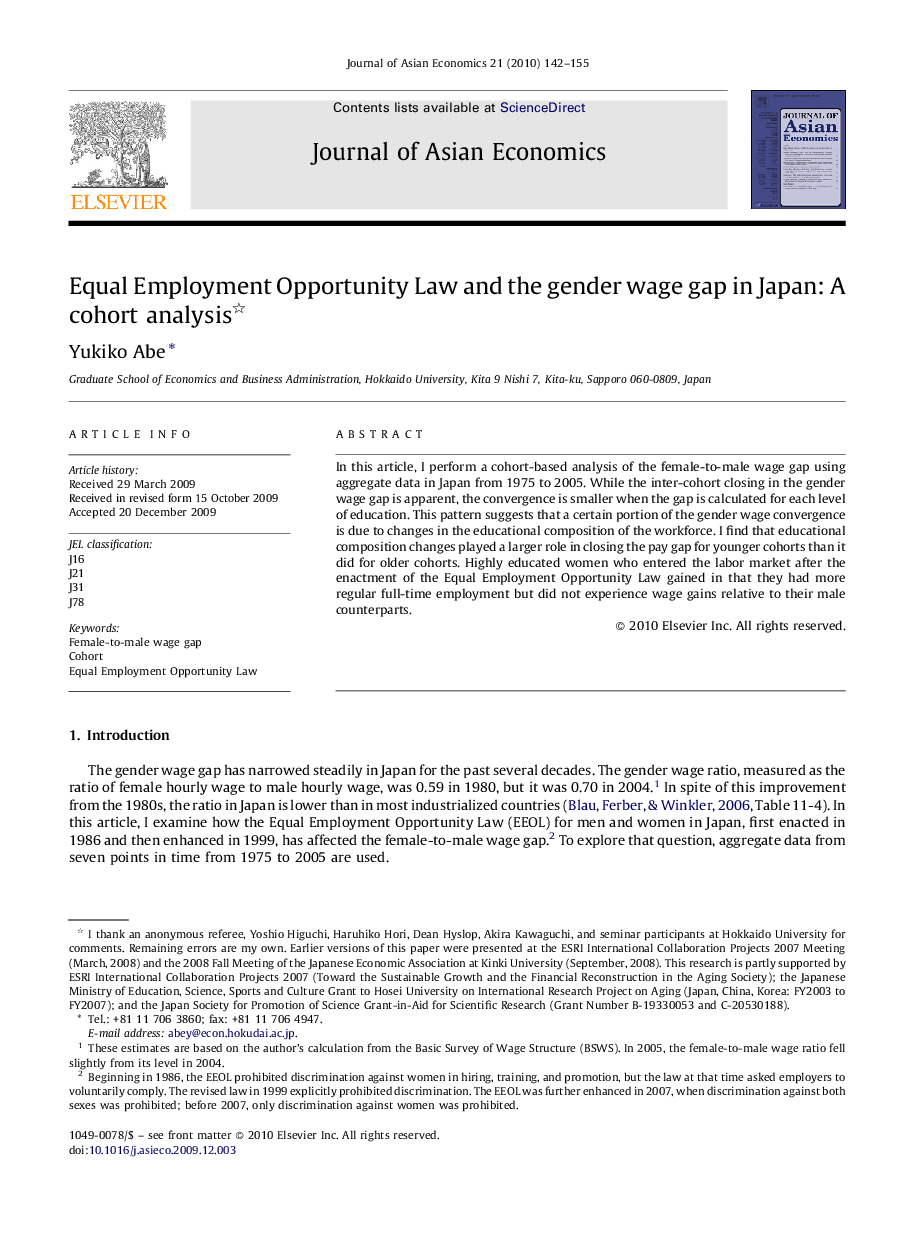| Article ID | Journal | Published Year | Pages | File Type |
|---|---|---|---|---|
| 5087513 | Journal of Asian Economics | 2010 | 14 Pages |
Abstract
In this article, I perform a cohort-based analysis of the female-to-male wage gap using aggregate data in Japan from 1975 to 2005. While the inter-cohort closing in the gender wage gap is apparent, the convergence is smaller when the gap is calculated for each level of education. This pattern suggests that a certain portion of the gender wage convergence is due to changes in the educational composition of the workforce. I find that educational composition changes played a larger role in closing the pay gap for younger cohorts than it did for older cohorts. Highly educated women who entered the labor market after the enactment of the Equal Employment Opportunity Law gained in that they had more regular full-time employment but did not experience wage gains relative to their male counterparts.
Related Topics
Social Sciences and Humanities
Economics, Econometrics and Finance
Economics and Econometrics
Authors
Yukiko Abe,
